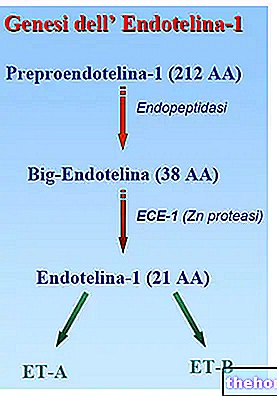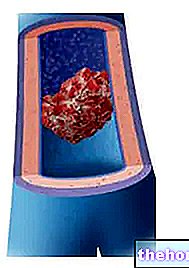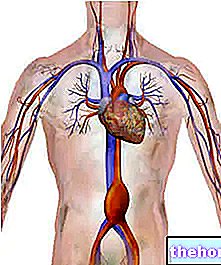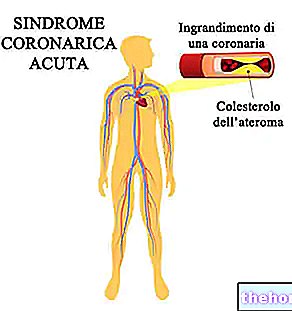Coronary
Importance and functions
The heart, like the other organs of the human body, needs the right doses of oxygen and nutrients to live and function properly. The supply of these substances is ensured by the presence of a dense network of vessels, which together form the coronary system.

At the level of the heart, the set of blood vessels divides from the beginning into two distinct systems. The first, called the left coronary system, supplies blood predominantly to the left side of the heart. The second, called the right coronary system, deals instead with supplying the right side.
Both of these systems originate from the root of the aorta, through two large arterial vessels called respectively the right coronary artery and the left cornoar artery. These vessels then divide into smaller and smaller branches until they reach the innermost parts of the heart.
At rest, the oxygen consumption of the heart is high, much higher than that of other organs and tissues. The myocardium is in fact particularly skilled in extracting the oxygen from the blood that supplies it.
The muscle tissue of the heart (myocardium) is in fact striated like that of the other skeletal muscles but has some peculiar differences. In resting conditions the heart is characterized by:
- very extensive capillary density (about 3-4 times higher than skeletal muscle). In fact, every single cell of the myocardium is nourished by at least one capillary
- high blood flow, approximately 20 times higher than in skeletal muscle (60-80ml / min.per 100g of tissue)
- very high oxygen consumption (7-9 ml / min. per 100 g of tissue versus 0.15 ml / min. per 100 g of skeletal muscle tissue)
- high oxygen extraction (arteriovenous O2 difference 10ml / 100 versus 5ml / 100ml for skeletal muscle)
However, the heart, compared to the other muscles of the body, has a limited capacity to draw energy from anaerobic processes.
Considering that the extraction of oxygen is already high at rest, when the energy demands increase to the heart there is nothing left to do but to increase the blood flow in the coronary system. The myocardium is therefore able to regulate the flow of blood according to its needs metabolic.
In particular, the coronary system can increase the blood supply to the heart up to five times to cope with the increased energy demands (during maximal exercise the blood flow in the coronary arteries can reach a value of 1L / min).
Definition
Ischemic heart disease is also known as myocardial ischemia.
- HEART DISEASE: heart disease;
- ISCHEMIA: decrease or suppression of the blood supply in a specific area of the body;
Tissues affected by ischemia are in a situation characterized by:
- reduced oxygen supply (hypoxia, anoxia)
- reduced availability of nutrients
- reduced elimination of waste substances
This situation results in a state of tissue suffering that can seriously compromise the functionality of the affected organs.
The term ischemic heart disease encompasses a spectrum of pathological conditions accumulated by a discrepancy between the consumption and the supply of oxygen to the myocardium. in a state of suffering (hypoxic state).
Consequences
Ischemia can occur in the presence of an increase in myocardial oxygen demand and / or a reduction in coronary flow.
In any case, an imbalance is created between the need and availability of oxygen and nutrients. This deficit can be transitory or permanent and it is in the latter case that the most serious damage occurs.
The consequences of cardiac ischemia depend on:
- importance of the occluded vessel: the greater the area of cardiac tissue supplied by that vessel, the greater the ischemic damage;
- duration of the occlusion;
- perfusion by a collateral circulation: if a cell is supplied with more than one capillary, an auxiliary vessel could guarantee its survival even when the main one is occluded;
- metabolic and functional state of the myocardium before the interruption of blood flow.
Causes
At the origin of ischemic heart disease there can be numerous pathologies, all united by the reduction of the blood supply to the heart. Among these, the most common forms of clinical manifestation are:
- Chronic coronary syndromes:
- chronic stable or exertional angina
- Acute coronary syndromes:
- unstable angina
- myocardial infarction without ST elevation
- ST elevation myocardial infarction
- heart failure
- unexpected death
- silent ischemia
The main cause of ischemic heart disease is atherosclerotic disease of the coronary arteries
Role of Atherosclerosis
Atherosclerosis is a degenerative disease that favors the deposit of fat aggregates and other substances in the internal wall of the arteries. These deposits decrease the vessel lumen and the elasticity of the walls. Forced to pass into a rigid vessel of narrow caliber, the blood undergoes an increase in pressure, putting the integrity of the artery itself at risk.
The narrowing, when it becomes important, alters normal circulation as it favors the formation of thrombi that can detach from the atherosclerotic plaque and obstruct smaller sized vessels. The thrombus itself, in addition to directly narrowing the vessel, also does so indirectly by promoting the synthesis of thromboxane, a powerful vasoconstrictor.
Inside the coronary arteries, when the obstruction reaches 50%, rather serious problems begin to arise since that vessel is no longer able to completely satisfy the metabolic demands of the perfused cells.
Local ischemia alters the electrical behavior of the whole heart, generating arrhythmias that can seriously endanger the efficiency of the heart pump. At the same time, the reduced flow of blood and oxygen decreases the force of cardiac contraction by reflex mechanism, further aggravating the situation.
Complications
The severity and duration of ischemia determine whether or not the heart damage is reversible.
If the ischemia persists over time, the heart cell can withstand the lack of oxygen and nutrients for about 20-360 minutes, after which it dies. Cell necrosis is called a heart attack and, if it involves a large number of cells, it can be fatal for the "individual.
Once dead these cells no longer regain their functionality, but are replaced by electrically and mechanically inert fibrous scar tissue.
Angina, on the other hand, is a transient myocardial ischemia with a reversible character. It is defined:
- stable if it is associated with constant physical effort and does not undergo significant changes over time,
- unstable if it is of recent onset, worsening and also appears at rest.
Primary prevention
Behavioral Measures
Primary prevention or prophylaxis is aimed at avoiding the onset of ischemic heart disease.
It is based on the identification and correction of the main risk factors:
- Smoke
- Diabetes mellitus
- Dyslipidemia
- Hypertension
- Sedentary lifestyle
- Obesity
- Estrogen replacement therapy: to be avoided in menopausal women who have had a heart attack
- Hyperhomocysteinemia
Medicines
Aspirin and antiplatelet agents in general in high-risk patients:
- They reduce the incidence of acute cardiac ischemic events
- To be used for prevention especially in patients with multiple risk factors
Beta blockers, ACE inhibitors
- They help control hypertension (ACE inhibitors) and normalize heart rate
Treatment and prophylaxis
If ischemic heart disease has already occurred, there are drugs that can control the progression of the disease and reduce the risk of new serious ischemic episodes:
- Nitrates
- Beta blockers
- Calcium channel blockers
For further information: Drugs for the treatment of ischemic heart disease
Other articles on "Ischemic Heart Disease"
- Coronary heart disease in short
- Ischemic heart disease: pathophysiology
- Ischemic heart disease - Drugs for the treatment of ischemic heart disease
- Heart disease and metabolic disorders























-nelle-carni-di-maiale.jpg)




